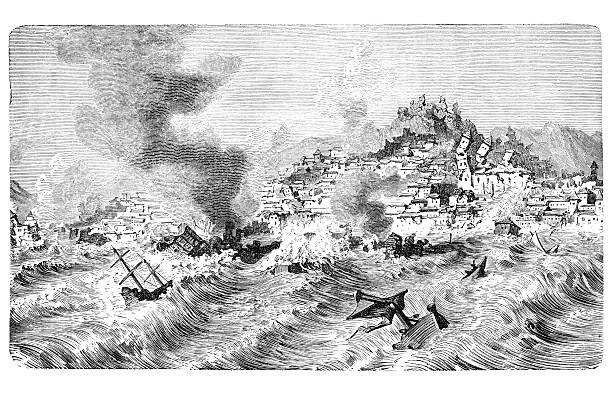If potholes between roads aren’t scary enough, welcome to a country with massive sinking potholes that are enough to gobble up your cars and your buildings all at once.
This is a tale that Joshimath, a town in Uttrakhand with a population of 20000 people is witnessing right now. The roads, buildings, towns, and temples in the town have developed massive cracks and people are being evacuated from their homes.
Now while this is a natural disaster, maybe it’s not so natural after all.
Let’s introduce you to land subsidence.
Has it ever happened that the land you are standing on suddenly gives in and forms a massive pit? No? Just in your dreams? Well, that’s it!
And land subsidence is something for which people are pointing fingers at each other right now, starting from Border Roads Organization.
BRO is being blamed because of their construction of a new bypass using some heavy machinery in the mountains. The continuous construction seems to be weakening the land structure.
Others are blaming the overdevelopment in Joshimath where the tours and treks for tourists are depreciating the town. Since the town was actually built on the debris of a landslide, you can imagine that it was never safe, to begin with.
But let’s step away from pointing fingers for a second and focus on a major problem – hydropower projects!
Hydropower projects promise an eco-friendly energy generation with a safe future. But this safe future is what is jeopardizing the present. Renewable energy projects that are ‘green’ and use the power of the Himalayan rivers are actually a major threat which is possibly the main problem for Joshimath too — the Tapovan Vishnugad Hydro Power Project by government-owned NTPC.
These projects require water – A LOT OF WATER! Especially in the mountains where you are fighting gushing water flows by establishing dams.
Then comes the underground tunnels and then comes the gigantic power stations. Then come the deep wells and the delegation of wastewater.
And to set all of this up, you need to drill into the hills. And if it’s not done right, it can puncture aquifers — rocks that contain groundwater — and disturb the land underneath our feet.
You get the point!
Even though the NTPC denies its role in the affair, it’s almost evident that there now are official records that showed NTPC’s tunnel boring machine had punctured rocks with water multiple times in the past. And one by one, all these transgressions might have led to this crisis today.
This problem isn’t limited to Joshimath only. Unchecked massive projects with a lot of room for error are a threat to every city or town, and the government needs to ensure the safety of all the people before even initiating a project like this.
Hydropower projects play a vital role in sustainable energy production by harnessing the power of flowing or falling water to generate electricity. These projects utilize dams, reservoirs, and turbines to convert kinetic energy from water into mechanical energy, which is then transformed into electrical power. Hydropower is one of the oldest and most reliable renewable energy sources, contributing significantly to global electricity generation. Large-scale hydropower plants, such as the Three Gorges Dam in China and the Hoover Dam in the United States, provide massive energy output, while small and micro-hydro projects cater to localized electricity needs in remote areas. One of the biggest advantages of hydropower is its ability to provide a stable and continuous energy supply, unlike solar and wind energy, which depend on weather conditions. Additionally, hydropower contributes to reducing greenhouse gas emissions, making it an environmentally friendly alternative to fossil fuels. However, hydropower projects also have certain challenges. Large dams and reservoirs can lead to the displacement of communities, loss of biodiversity, and alteration of natural water flow, affecting aquatic ecosystems. Moreover, high initial costs and long construction periods make hydropower projects capital-intensive. Despite these challenges, many countries continue to invest in hydropower as part of their renewable energy strategies. Advances in technology, such as pumped-storage hydropower, improve energy storage capabilities, ensuring electricity availability during peak demand periods. Governments and environmental agencies are also working on sustainable hydropower solutions that minimize ecological damage while maximizing energy output. With increasing demand for clean energy, hydropower projects remain crucial in the global transition towards a low-carbon economy. Their ability to provide renewable, reliable, and cost-effective energy ensures that hydropower will continue to be a cornerstone of the world’s energy infrastructure for years to come.











